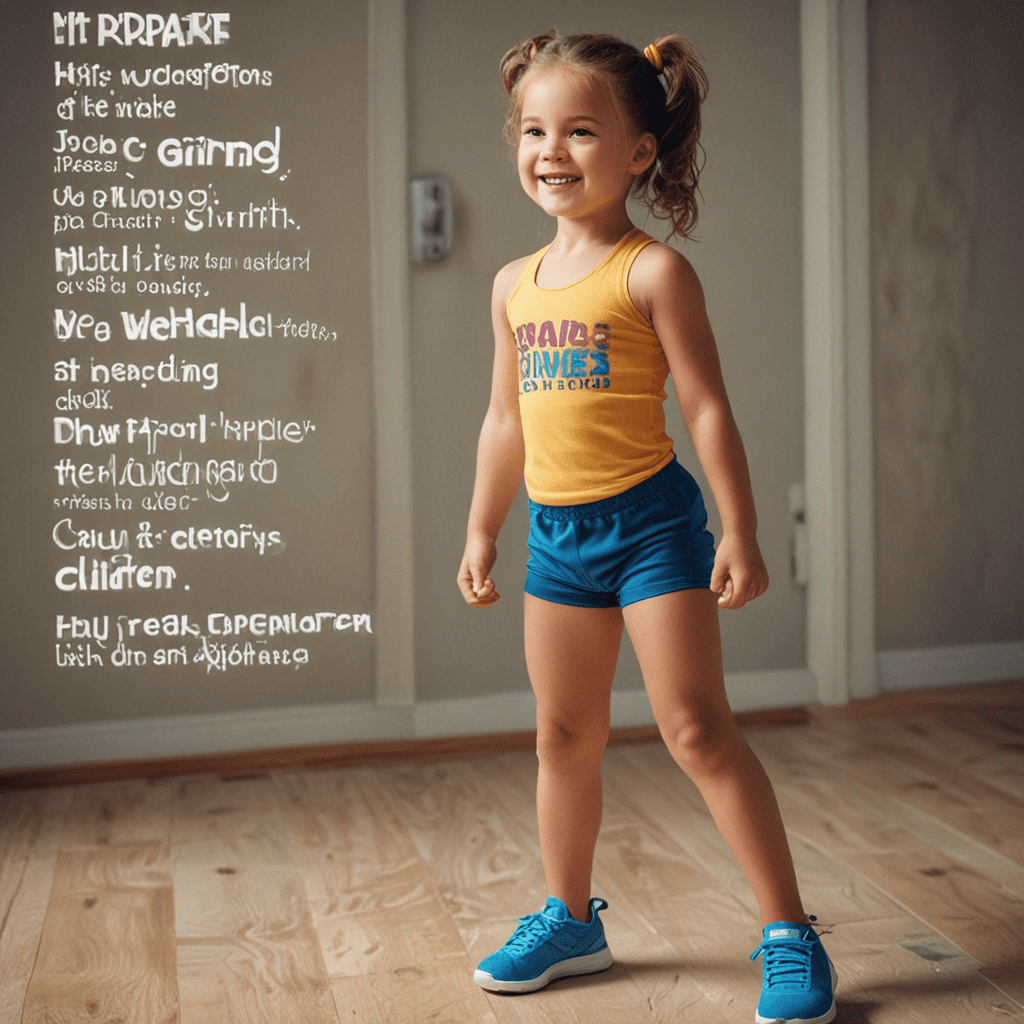
##1. Introduction
Self-esteem is a critical factor in children's overall development and well-being. It influences their physical and mental health, academic success, and relationships with others. Positive affirmations have emerged as a powerful tool to nurture and enhance children's self-esteem, particularly in the context of fitness.
##2. The Importance of Self-esteem in Fitness
Self-esteem plays a crucial role in children's fitness journey. Children with high self-esteem are more likely to engage in physical activity, try new sports, and persist despite challenges. They believe in their abilities and have a positive self-image, which motivates them to stay active and make healthy choices.
##3. What are Positive Affirmations?
Positive affirmations are brief, positive statements that individuals repeat to themselves to promote self-acceptance, confidence, and well-being. They are rooted in the belief that our thoughts and words can shape our reality. Positive affirmations challenge negative self-talk and replace them with empowering messages.
##4. How Positive Affirmations Can Impact Children's Self-esteem
Positive affirmations work by reinforcing children's positive qualities and abilities. When children hear positive messages about themselves, they start to internalize those messages and develop a more positive view of themselves. Affirmations help build resilience by providing children with tools to cope with setbacks and challenges. They create a sense of self-efficacy, empowering children to believe in their abilities and pursue their goals.
##5. Benefits of Positive Affirmations for Children in Fitness
Positive affirmations offer numerous benefits for children in fitness. They:
- Enhance self-confidence and reduce self-doubt
- Promote a positive body image and encourage physical activity
- Increase motivation and persistence in the face of challenges
- Foster resilience and emotional regulation
- Improve overall mental well-being and reduce anxiety related to fitness
##6. Strategies for Using Positive Affirmations with Children
Incorporating positive affirmations into children's fitness routine requires consistency and creativity. Parents, educators, and coaches can use various strategies, such as:
- Establish a daily affirmation ritual: Dedicate a few minutes each day for children to repeat positive affirmations out loud or write them down.
- Use affirmation cards: Create affirmation cards with empowering messages tailored to the child's fitness journey. Encourage them to keep the cards visible to reinforce the affirmations throughout the day.
- Integrate affirmations into fitness activities: During physical activities, incorporate affirmations as chants or motivation boosters.
- Make affirmations personalized and specific: Customize affirmations to reflect the child's strengths and focus on specific aspects of fitness, such as perseverance, body appreciation, or skill development.
##7. Evidence Supporting the Impact of Positive Affirmations
Research has consistently shown that positive affirmations have a positive impact on children's self-esteem. Studies have demonstrated that affirmations result in:
- Increased self-confidence and positive self-perception
- Enhanced motivation and engagement in physical activities
- Improved academic performance and social adjustment
- Reduced anxiety and depression symptoms
- Foster body appreciation and healthy eating habits
##8. Limitations and Considerations
While positive affirmations are largely beneficial, certain limitations and considerations should be noted:
- Overuse or insincerity can diminish their impact.
- Affirmations should be developmentally appropriate and tailored to the child's needs.
- Positive affirmations cannot substitute for addressing underlying emotional or psychological issues that may contribute to low self-esteem.
##9. Best Practices for Using Positive Affirmations with Children
To optimize the impact of positive affirmations with children, follow these best practices:
- Be consistent and persistent in using affirmations.
- Choose affirmations that resonate with the child and are relevant to their fitness journey.
- Make affirmations personal, meaningful, and realistic.
- Encourage children to repeat affirmations aloud or write them down for reinforcement.
- Create a positive and supportive environment where children feel comfortable expressing themselves.
##10. Conclusion
Positive affirmations can be a powerful tool to enhance children's self-esteem in fitness. By implementing these strategies effectively, parents, educators, and coaches can create a nurturing environment that fosters children's growth, resilience, and well-being. Positive affirmations encourage children to embrace their strengths, develop a positive body image, and strive for their fitness goals with confidence and self-belief.
Frequently Asked Questions
Q: What are some examples of positive affirmations for children in fitness?
A:
- I believe in my strength and abilities.
- My body is strong and capable.
- I can overcome challenges with effort and determination.
- I love moving my body and trying new activities.
- I am proud of myself for being active and healthy.
Q: How can I encourage my child to use positive affirmations?
A:
- Model the use of positive self-talk and affirmations yourself.
- Provide a safe and supportive environment where they can express themselves without judgment.
- Help them create personalized affirmations that are meaningful and impactful.
- Make affirmations part of your daily routine, such as during bedtime or mealtimes.
Q: Are there any potential risks of using positive affirmations with children?
A:
- Overuse or insincerity can lose their impact.
- Ensure affirmations are age-appropriate and tailored to the child's needs.
- Positive affirmations cannot substitute for professional support if the child has underlying emotional or psychological issues.
